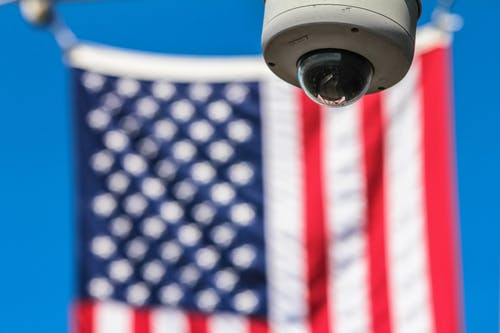When you read about spy cameras what is the first thing that comes into your mind? Go on, admit it, you’re thinking about James Bond! We all have our favorite movie where Q brings out a ridiculous device with a camera hidden in it, and then later on in the movie that the same device saves Bond’s life and helps him rescue a beautiful lady from the grasp of an arch-villain. Well, what if spy cameras were as glamorous in real life? Here we are going to examine 4 fascinating facts about spy cameras that you never knew.

The First Was Made in 1938
In 1938 the first successfully miniaturized spy camera was brought to market by a German inventor called Walter Zapp and was called the Minox Riga. Believe it or not this camera actually saw espionage action during both WW2 and the Cold War. The film used was the tiniest ever produced at 8x11mm and it was housed in a stainless steel case. So sturdy, in fact, was the case that it continued to be used by intelligence agencies long after the Cold War ended. It could be re-filled with a canister and then you simply loaded each film with a pump-action akin to a shotgun. If you want one of these beautiful cameras today you will need to part with over $1000, which in my opinion is a tiny price to pay for a gadget that resembles something straight out of a Bond film!
The Microdot Camera
The microdot camera was developed out of the legacy of the Minox, and whilst the Minox was capable of taking a photo of an entire A4 sheet of paper, the microdot paper could achieve this with a camera the size of a full stop, hence the name of the camera. The beauty of this camera was that it could be fitted into virtually any device, from a ballpoint pen to a pocket watch, to a packet of cigarettes. Not only was it capable of photographing an A4 sheet of paper it could also take pictures of buildings and people, so it became the first universal spy camera. However, the most fascinating aspect is that you required a magnifying glass to decipher the image as it was recorded on film that size of a dot. In essence, it was the first example of compressed data, which of course is fundamental to all modern computing.
Modern Cameras
If we fast forward to the modern world, the technology used in spy cameras could not be more different. Spy cameras are everywhere and hidden in plain sight. On virtually every street you will see dozens of cameras, indeed some countries such as Monaco are under 100% surveillance! If you check out this URL then you can see a whole host of spy camera examples used in the modern world. They are quite literally everywhere; police wear them on their jackets, traffic wardens use them to snare errant parkers and you will often hear the buzz of a drone spying on you from above. The surveillance society that Orwell warned us all about has come true in a little over 50 years. It’s scary how quickly technology has advanced!
Pigeons
We have all heard of pigeons being used during the wars to send messages back from behind enemy lines, due to their innate ability to always find their way home, but did you also know that they were used for aerial reconnaissance?! That’s right, a camera was attached to the chest of the bird, and whilst they were in flight it would take a steady stream of images from below them. They were particularly useful to help identify whether targets had been successfully hit and the level of damage that the targets had suffered. This was vital surveillance at a time when it was almost impossible to send troops on the ground to collect this information. It is not an exaggeration to say that pigeons and their aerial photography played a huge part in the allied victory over the Nazis.

As we have discovered, the development of spy cameras has come a long way since the first stainless steel camera invented by Zapp in the 1930s. Technology has advanced through carrier pigeons and the use of tiny microdot cameras that require magnifying equipment in order to read the images that they took. These cameras were the first that managed to compress data and were the forerunners of digital cameras. Today we can see how far technology has come with practically the whole western world, a surveillance state with cameras as ubiquitous as a lampost.

